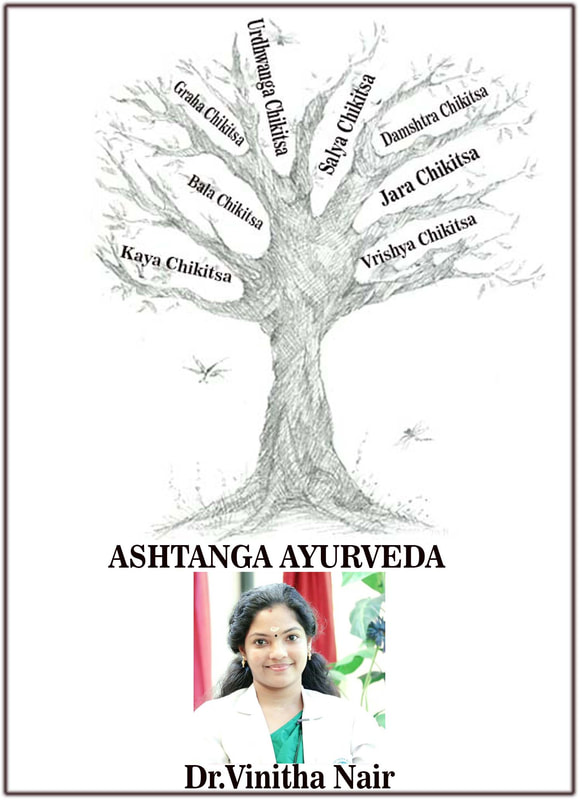Ashtanga Ayurveda

Learning Ayurveda is like swimming across a vast ocean of knowledge. Most of us are quiet familiar with the term Ashtanga Ayurveda (8 limbs of Ayurveda). The concepts of Ayurveda are so expansive and vivid. It has no equivalent in other systems of medicine. For the better understanding of this vast science, our ancient seers divided this whole treatise into 8 different sections. Like the branches of a tree from the same trunk, the 8 branches of Ayurveda rooted on the same fundamental basic principles reach the same goal. Let’s have a look at these 8 branches of Ayurveda and what it deals with in general.
- Kaya Chikitsa: Kaya means body and Chikitsa means treatment. This branch of Ayurveda deals with General Medicine. Various physical and psychological conditions are dealt with here.
- Bala Chikitsa: As the name suggests, this branch deals with the health conditions of children. It also includes the ante natal and post natal care for begetting a healthy progeny.
- Graha Chikitsa: This branch deals with the mental disorders. Ayurveda opines that a healthy body lodges a healthy mind. So, a feeble or sick mind is prone to diseases. Ayurveda uses medicines, psychotherapy, religious practices/ rituals according to the faith of the individual in the treatment aspects.
- Urdhwanga Chikitsa: Urdhwanga refers to the parts of the body above the clavicle. This includes the disorders of Ear, Nose and Throat as well.
- Salya Chikitsa: Surgical interventions are made use in the treatment aspects. Conditions like hemorrhoids, fistula, pilonidal sinuses, etc, are dealt with here. As we know, Acharya Sushruta is considered to be the Father of Indian Surgery. There are ample references of renal calculi, skin grafting, dissection of dead body and intestinal obstruction kind of conditions in the Vedic texts.
- Damshtra Chikitsa: This is also called as Agada Tantra which deals with Toxicology. It is in practice since the ancient times. It gives knowledge about various kinds of poisoning like food poisoning, different varieties of snakes, scorpions, spiders, etc, and the quality of their venoms along with medical interventions.
- Jara Chikitsa: This refers to Geriatrics and special attention is given to the body and mind. The deterioration of the body is slowed down with Rasayana (rejuvenative) treatments. Ayurveda focuses on the physical and mental aspects of ageing.
- Vrishya Chikitsa: Also known as Vajikarana, this branch deals with promoting and improving the sexual ability of an individual. Factors contributing to a healthy progeny are also considered here.
Most of us are unaware of these facilities available in Ayurveda. This would be an eye opener for those who feel that Ayurveda is only for the old age or for those with history of stroke or so. Apart from the above mentioned branches, there are texts in Ayurveda which explains the various conditions of plants called Vrkshayurvdea, health conditions of animals like elephants, horses, cows etc called Hastiayurveda/ Gajayurveda, Aswayurveda and Mrgayurveda or Pashuayurveda.
Though it is a traditional ancient living system of medicine with a sound philosophical background, there is yet a need for advanced research/ acceptability for the promotion of Ayurveda.
